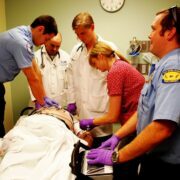Getting a tooth extracted out of your mouth is no walk in the park. Dentists often suggest alternatives to tooth extraction when there is a dental emergency. In fact, tooth extraction is the last option to be used as a dental solution. However, there are some cases where it is needed, and it is important to understand them.
Going through tooth extraction is a big step and can be frightening for some people. Coconut Creek dentists will make sure to use the latest dental technology to provide you with a painless experience.
Table of Contents
What is a Tooth Extraction?
Tooth extraction is a dental procedure executed by an oral surgeon removing a tooth from its alveolus or socket. Periodontists and general dentists can also carry out this procedure as a part of their general dental skills.
There are two types of tooth extractions:
Simple Extraction
It is done when a tooth is visible in the mouth. Local anesthesia is used for this procedure.
Surgical Extraction
Surgical extractions are needed when the tooth is not properly visible; therefore, it is not easily accessible. Often it happens because the tooth is under the gumline or has not fully erupted.
Reasons Why You May Need A Tooth Extraction
Irreplaceable tooth damage.
Irreplaceable damage takes place when a tooth is severely damaged. This happens when tooth decay reaches the center of the tooth, which is the pulp. Often a root canal treatment is done to remove the pulp from the tooth. However, if the damage is severe, you may need the extraction to stop the infection from spreading.
Periodontal disease.
In periodontal disease, the gums, periodontal ligaments, alveolar bone, and other areas surrounding the tooth get infected. It is caused by the growth of plaque and tartar on the tooth. Gingivitis is the early stage of periodontal disease where the gum is inflamed. A more severe kind of periodontal disease is periodontitis which affects the bones and tissues surrounding the tooth. If the infection deteriorates the area too much, you may need a tooth extraction.
Overcrowding.
Sometimes there is not sufficient room in your mouth for all your teeth to fit correctly. Your teeth may try to adjust and end up getting crooked or displaced. Crooked or displaced teeth can cause several problems, including pain, tooth decay, gum disease, and difficulty chewing. Tooth extraction can eliminate all these problems by creating more space to avoid overcrowding.
Wisdom tooth.
Wisdom teeth are commonly extracted. Wisdom teeth at the back of your mouth are the third set of molars that don’t have enough room to grow upright. They often start growing crookedly or crowd your other teeth. However, impacted wisdom teeth do not erupt properly and start growing inside the gums, pushing your other teeth. In this case, it is crucial to get them removed. You may experience red, swollen, or bleeding gums and difficulty moving your jaw.














Comments